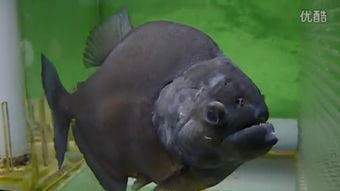Introduction:
Summer is the peak season for fishing enthusiasts, with the warm weather and abundant aquatic life making it an ideal time to hit the water. However, with the increased activity of fish and the variable conditions of the water, it can be challenging to maintain a successful fishing experience. One of the key elements to mastering summer fishing is understanding how to adjust your bait. In this article, we will delve into the essential techniques for tuning your bait and improving your chances of landing a big catch during the summer months.
Understanding the Basics of Bait Adjustment:
Before diving into the specifics of how to adjust your bait, it's important to understand the basics of what bait adjustment entails. Bait adjustment refers to the process of fine-tuning the position of your fishing float or indicator, which is crucial for detecting the subtle movements of fish as they take your bait. The goal is to ensure that your bait is presented in a way that is most attractive to the fish, while also allowing you to detect their strikes accurately.
Choose the Right Bait:
The first step in adjusting your bait is selecting the right type of bait for the fish you are targeting. In summer, fish are often more active and may be more attracted to live bait or artificial lures that mimic natural prey. Consider the following options:
- Live Bait: Worms, crickets, minnows, and leeches are popular choices for summer fishing.
- Artificial Lures: Spinnerbaits, crankbaits, and plastic worms can be effective in summer conditions.
Attach Your Bait Properly:
Once you've chosen your bait, it's important to attach it properly to your line. This ensures that your bait moves naturally and is less likely to tangle or cause unnecessary resistance. Here's how to do it:
- For live bait, use a bait holder or a simple hook with a small split ring to prevent the bait from slipping off.
- For artificial lures, follow the manufacturer's instructions for attaching them to your fishing line.
Adjusting the Bait's Depth:
The depth at which your bait is presented is crucial for attracting fish. Here's how to adjust the depth of your bait:
- Using a Float: Adjust the position of your float to control the depth. A higher float will suspend your bait closer to the surface, while a lower float will lower it deeper into the water.
- Using a Sinker: Attach a sinker to your line above your bait to add weight and control the depth. The heavier the sinker, the deeper your bait will go.
Fine-Tuning the Bait's Movement:
The way your bait moves through the water can significantly impact your fishing success. Here are some tips for fine-tuning the movement:
- Natural Rhythm: Allow your bait to move with the natural rhythm of the water. Avoid erratic or unnatural movements, as these can spook fish.
- Experiment with Speed: Vary the speed at which you retrieve your bait. Some fish may be more attracted to a slow, steady retrieve, while others may prefer a faster, more erratic motion.
Sensitivity and Strike Detection:
One of the most important aspects of bait adjustment is ensuring that you can detect fish strikes. Here's how to improve your sensitivity:

- Light Line: Use a lighter line to increase your sensitivity to the subtle movements of fish.
- Adjust the Float: A properly adjusted float will help you detect even the smallest nibbles from fish.
- Practice Patience: Be patient and watch your bait closely. Sometimes, the most subtle movements can indicate a fish strike.
Conclusion:
Mastering the art of bait adjustment is a crucial skill for any angler, especially during the summer months when fish are more active and conditions can be challenging. By understanding the basics of bait adjustment, choosing the right bait, and fine-tuning the depth and movement of your bait, you can significantly improve your chances of landing a big catch. Remember to practice patience, be observant, and always be willing to experiment with different techniques to find what works best for the fish you are targeting. Happy fishing!












